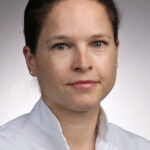Please log in to view your event registrations and bookings.
Professor Kerstin Galler
Event speaker

Kerstin Galler obtained her degree in dentistry from the Ludwig-Maximilians-University in Munich in 2000. She worked in Private Practice until 2002 and then joined the Department of Conservative Dentistry and Periodontology at University Hospital Regensburg, Germany. She received post-doctoral training at the University of Texas Health Science Center in Houston from 2004 to 2006 and earned her Ph.D. in Biomedical Engineering from Rice University in Houston in 2009. After her return to Regensburg, she completed her “Habilitation” and built her own research group as an Associated Professor to work on pulp biology and immune responses and on revitalization and tunable scaffolds for dental pulp tissue engineering. She has been teaching and supervising dental students for many years; her clinical focus is on conservative dentistry, endodontology and dental traumatology. Dr. Galler was summoned recently to the University of Erlangen-Nuremberg as a Full Professor and Chair of the Department of Conservative Dentistry and Periodontology.
Dr. Galler was President of the Pulp Biology and Regeneration Group of IADR in 2013/14, is currently Chair of the Research Committee of the European Society of Endodontology (ESE) and member of the Board of the German Society for Endodontolgy (DGET). She has led the committee for the ESE Position Statement on Revitalization and published numerous articles in the fields of pulp biology and dental pulp tissue engineering, has received several awards for her scientific work and has lectured nationally and internationally in clinical as well as scientific meetings.
The Use of Calcium Silicates in Vital Pulp Treatment – Biological and Clinical Aspects
Prof. Kerstin Galler, Ph.D.
Department of Conservative Dentistry and PEriodontology
University of Erlangen-Nuremberg
To maintain pulp vitality is an essential goal in conservative dentistry. Advances in the fields of pulp biology and immunology, a deeper understanding of microbiological challenges and the availability of new and highly biocompatible materials such as calcium silicates have improved the prognosis after vital pulp treatment considerably. Still, carious exposures are different from traumatic injuries, and different approaches (direct pulp capping, partial or full pulpotomy) have to be chosen depending on the clinical situation. Thorough diagnostics of the pulpal status are equally important as a careful and meticulous clinical approach. This lecture will cover the role of microorganisms, pulp defence mechanisms and reactions to the materials applied in contact with the pulpal tissue. The clinical procedures will be discussed as well as caveats and potential outcomes.